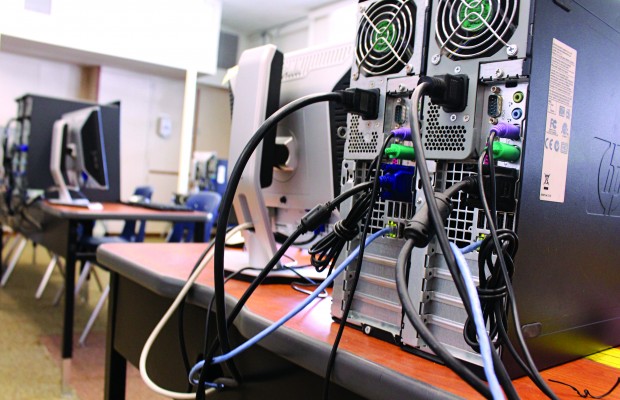Proposed bond measure I seeks $197 millions for school improvements

Measure I is a proposed general obligation bond that would raise $197 million to modernize CVUSD campuses. It aims to upgrade classroom technology, repair aging schools, update science and career technology labs, and increase security.
If 55% of CVUSD residents vote for Measure I in the general election on Nov. 4, it will extend the tax rate set by Measure R, which was passed in 1998. This would keep the rate at about $33 per $100,000 of assessed property value for all CVUSD residents in order to generate the revenue proposed by the bond in twenty years.
“So what we are asking for is not a tax increase but a tax extension – a twenty year tax extension,” Superintendent Jeffrey L. Baarstad, Ph.D. stressed at a public forum about the bond on Oct. 2.
The new bond has similar objectives to Measure R, which updated science labs and athletic facilities, established internet connection in classrooms, and built the Performing Arts Center.
Steve Johnson, history teacher and supporter of Measure I, described it as “a proposal to improve the infrastructure, technology, and safety of the school district.” While he listed examples of possible projects, such as modern fire detection and security lighting, he added that “every campus has its own issues” that could be individually addressed by the bond.
As the general election approaches, supporters such as Johnson will be walking the streets and going door-to-door. “Teachers and other supporters are using word of mouth, working phone banks, calling voters, asking them to support the bond,” Johnson said.
A poll conducted in October 2013 on a previous version of the bond (which allocated $229 million) showed support at 56%. According to Baarstad, the bond has since been updated to respond to community feedback.
At the public forum where Baarstad explained the bond, one community member expressed his concerns that the money raised by the measure would not necessarily result in “better education for students.”
Another community member brought up that “parents (would) rather make an investment directly to their students.” The community member said that without the tax extension, parents can put money directly into tutoring, clubs, or other enrichments for their children.
Baarstad responded to these concerns. “If we want to prepare our students for college and universities (and) truly prepare our kids for the world and the 21st century, we have to expose them every day to tools and technology to help them learn.”
In addition, Johnson recognized other possible issues. “Any time you’re asking people to pay for something through taxes, they’re going to be concerned if they’re getting their money’s worth,” said Johnson. He added that people who don’t have children in the school system are not necessarily eager to spend their money modernizing the district.
“They might not get to look at the big picture and see that better schools improve all of our lives,” Johnson said.



